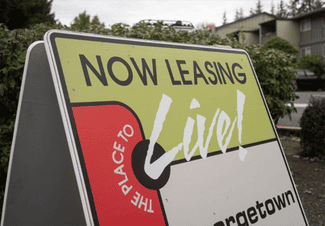Positive Signs Emerge in Multifamily Market in Spring Leasing Season
The beginning of the spring apartment leasing season in April 2023 brought a surge of positivity to the multifamily real estate market, as several encouraging indicators set the stage for a promising period of leasing ahead.

In the second quarter of 2021, during an extraordinary surge in demand, an impressive 267,000 units were absorbed nationally. However, over the subsequent five quarters, absorption figures consistently fell below the six-year pre-pandemic average, reflecting a weakening of demand since the peak of 2021 as rent growth weighed on new renter household budgets.
If the strong pace set in April this year persists through May and June, it is projected that 102,000 apartment units could be absorbed during the quarter, close to the second quarter six-year average absorption of 105,000 units.

The national average vacancy rate for multifamily properties remained unchanged at 6.7% in April. After climbing steadily from its low of 4.7% at the end of the third quarter of 2021, the vacancy rate was relatively stable through April 2023. Throughout 2022 and the first quarter of 2023, the supply of available units has exceeded demand, leading to upward pressure on the national vacancy rate.
However, the strong demand of 34,000 units absorbed in April was enough to match supply additions, stabilizing the vacancy rate and marking an important initial step in halting the deceleration of rent growth.
Apartment rent growth in April measured 0.4% month over month. Following four months of easing rents during the second half of 2022, national rent growth resumed at the beginning of this year. April sustained this positive trend, with average monthly rents rising from $1,650 to $1,656.
However, the current positive month-over-month growth rent has not been strong enough to outweigh the year-over-year deceleration in rent growth. In April, annual rents declined 40 basis points to 2.1%. Midwest and Northeast markets stood out as leaders in month-over-month rent growth in April, benefiting from a more balanced supply-demand dynamic compared to the Sun Belt markets, which face potential oversupply conditions.
While the multifamily real estate market moved toward stabilization in April, caution is still warranted as challenges facing the economy persist. The results of April offer optimism that the second quarter of this year could outperform the weak performance of the same time 12 months ago.
However, achieving stability in vacancy rates and annual rent growth hinges on April’s absorption pace continuing or strengthening throughout May and June, to keep pace with the large number of new deliveries expected in the quarter. This would mark a significant turning point, reversing trends observed over the past year and a half.
Source: CoStar News















 Accessibility
Accessibility